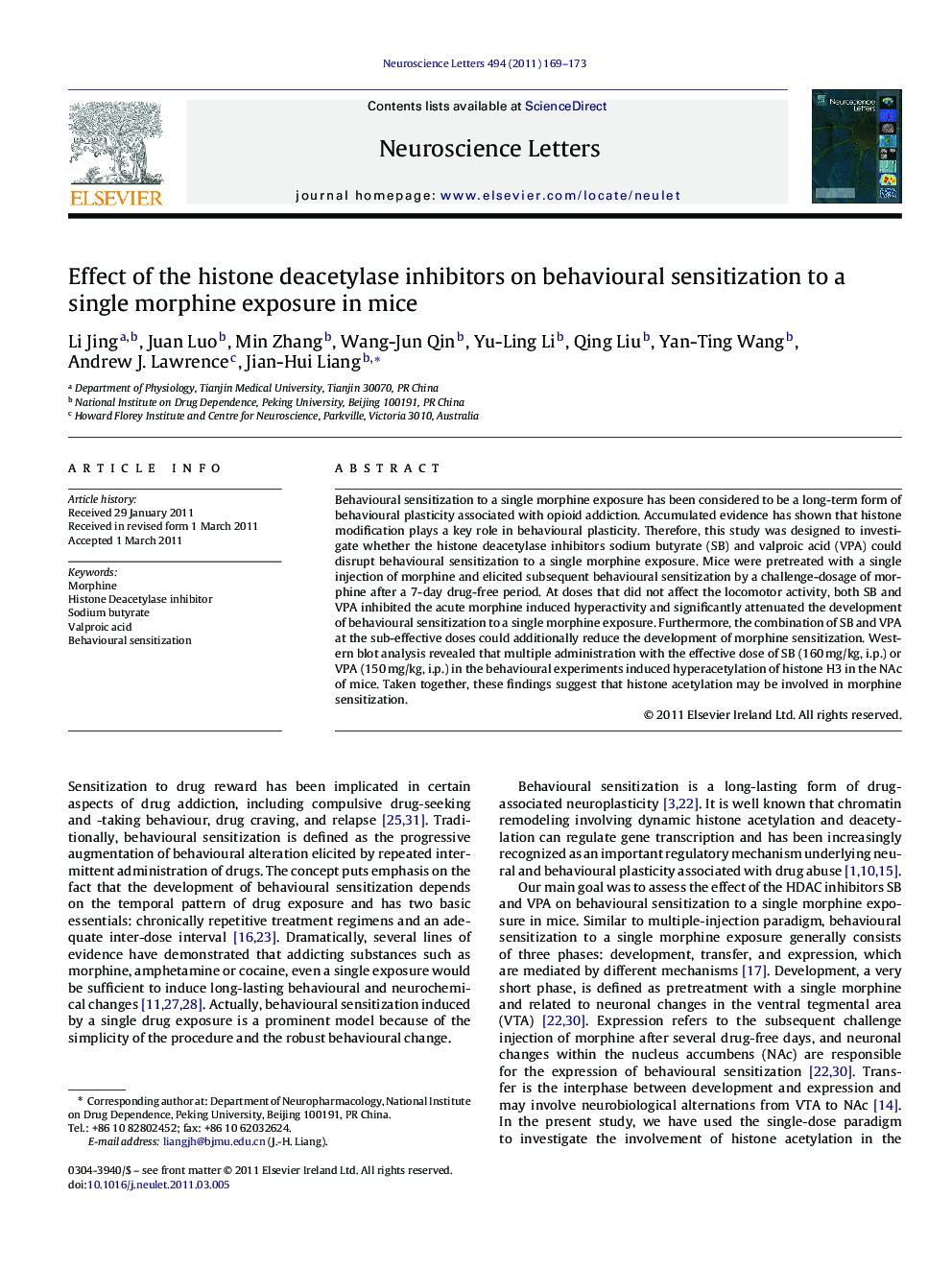| Article ID | Journal | Published Year | Pages | File Type |
|---|---|---|---|---|
| 4345548 | Neuroscience Letters | 2011 | 5 Pages |
Behavioural sensitization to a single morphine exposure has been considered to be a long-term form of behavioural plasticity associated with opioid addiction. Accumulated evidence has shown that histone modification plays a key role in behavioural plasticity. Therefore, this study was designed to investigate whether the histone deacetylase inhibitors sodium butyrate (SB) and valproic acid (VPA) could disrupt behavioural sensitization to a single morphine exposure. Mice were pretreated with a single injection of morphine and elicited subsequent behavioural sensitization by a challenge-dosage of morphine after a 7-day drug-free period. At doses that did not affect the locomotor activity, both SB and VPA inhibited the acute morphine induced hyperactivity and significantly attenuated the development of behavioural sensitization to a single morphine exposure. Furthermore, the combination of SB and VPA at the sub-effective doses could additionally reduce the development of morphine sensitization. Western blot analysis revealed that multiple administration with the effective dose of SB (160 mg/kg, i.p.) or VPA (150 mg/kg, i.p.) in the behavioural experiments induced hyperacetylation of histone H3 in the NAc of mice. Taken together, these findings suggest that histone acetylation may be involved in morphine sensitization.
Graphical abstractFigure optionsDownload full-size imageDownload high-quality image (114 K)Download as PowerPoint slideHighlights► A single morphine-induced behavioural sensitization is simple and convenient. ► Reveal mechanisms of histone acetylation on development of morphine sensitization. ► HDACs in rodents may regulate drug addiction-related behaviours. ► Open a new potential way toward treating drug abuse and dependence.
